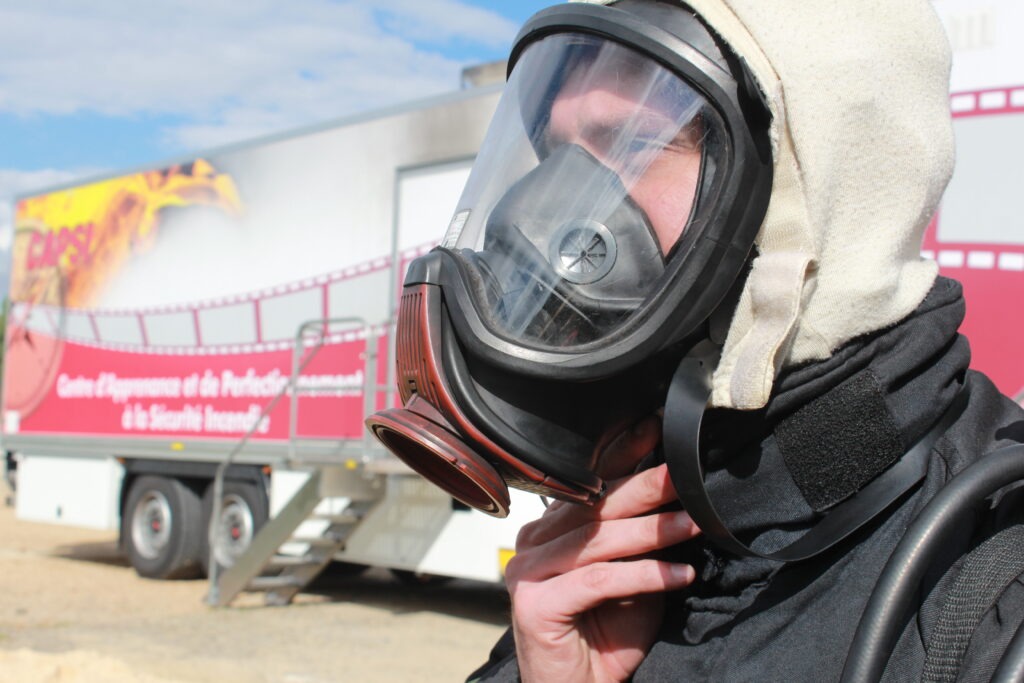What qualifications do you need to work in fire safety?

Working in fire safety requires specific training and diplomas. SSIAP 1, for example, is essential to become a fire safety officer. To progress, however, SSIAP 2 is also required. In addition to these diplomas, experience in the field is also valued. Let's take a look at the steps you need to take to enter this demanding profession.
Understanding the job of fire safety officer
Fire safety officers play an essential role in protecting people and property. Their main missions include :
- Fire prevention through regular rounds and checks on safety equipment.
- Rapid response to fire outbreaks to limit damage.
- Applying safety instructions to ensure effective evacuation.
These professionals need to be in good physical condition and able to react quickly in stressful situations. They often work in collaboration with the fire department to coordinate emergency responses. Communication is crucial, particularly in raising awareness of fire risks among staff and the public. Assisting people is also a key skill, enabling them to provide help when needed. These responsibilities make fire safety officers indispensable players in the security field.
Focus on SSIAP 1 training
SSIAP 1 training is essential for those wishing to become fire safety officers. It lasts around two weeks and combines theory with practical exercises. Participants learn to understand the behavior of fire and the principles of fire regulations, both in public buildings (ERP) and high-rise buildings (IGH).
Skills acquired include handling fire extinguishers, evacuating people, and checking safety installations. To enroll, you need a valid first-aid certificate and a medical certificate of physical fitness.
At the end of the training course, a final exam assesses candidates' theoretical and practical knowledge. Passing this exam leads to the SSIAP 1 diploma, opening the way to employment in various fire safety sectors.
What is the SSIAP diploma?
The SSIAP diploma (Service de Sécurité Incendie et d'Assistance à Personnes) is divided into three levels, each corresponding to specific responsibilities within fire safety departments.
- SSIAP 1: for fire safety officers, this level involves prevention and protection missions in public buildings (ERP) and high-rise buildings (IGH).
- SSIAP 2: for team leaders, responsible for coordinating and supervising agents in the field.
- SSIAP 3: for department heads, who manage the entire safety system, advise management and manage relations with the safety commission.
Each level includes specific training, combining theory and practice, to ensure complete mastery of the necessary skills. The diploma is recognized by current regulations, guaranteeing that professionals comply with legal requirements.
How to become a fire safety officer
To become a fire safety officer, you need to follow a structured career path. Here are the key stages:
Obtaining the SSIAP 1 diploma: This diploma is essential for starting out in the profession. It teaches the fundamentals of fire safety and first aid.
First aid certificate: A valid first aid certificate is often required. It ensures that the agent is ready to intervene in an emergency.
Physical fitness: A medical certificate attesting to the employee's physical fitness is required to ensure that he/she can carry out his/her duties.
Professional card: This card, issued by the prefecture, is required to work legally.
Finally, it is possible to progress to more senior positions, such as team leader, by obtaining the SSIAP 2 and accumulating experience in the field.
Duration and content of SSIAP 1 training
SSIAP 1 training lasts 67 hours, spread over approximately 11 days, not including the exam. It is aimed at groups of 12 trainees maximum, enabling personalized follow-up. Participants learn how to intervene in the event of a fire, alert emergency services and evacuate the public.
The course content covers several key areas:
- Knowledge of fire and how it spreads
- Basic fire regulations
- Use and maintenance of safety equipment
- Evacuation and rescue techniques
Practical exercises, such as handling fire extinguishers, help to anchor these skills. As an example, trainees carry out security rounds to detect anomalies, thus ensuring optimum protection of property and people. This course is essential for anyone aspiring to become a fire safety officer.
Other fire safety training courses
For those wishing to deepen their knowledge of fire safety, a variety of additional training courses are available. Among these, training to become an occupational first-aider (SST ) is a must. They provide first aid skills and are often a prerequisite for working in the sector.
Training in fire safety systems is also essential. This includes learning how to use and maintain detection, extinguishing and smoke extraction systems.
For those seeking technical expertise, specific courses on fire regulations or risk management are offered. They help you understand legal obligations and ensure that your installations comply with regulations.
Finally, diplomas such as the BTS Operational Management in Security can open up opportunities in management roles within private or public companies.
Career opportunities after SSIAP training
There are many and varied career opportunities after SSIAP training. Once you've graduated, you can join fire safety departments in establishments open to the public (ERP) or high-rise buildings (IGH). Here are just a few examples of possible careers:
- Fire safety officer (SSIAP 1): responsible for fire prevention and response
- Fire safety team leader (SSIAP 2): leads a team of agents and coordinates interventions
- Fire safety department manager (SSIAP 3): oversees the entire fire safety department
These positions provide essential skills for preventing and managing fire risks, while also offering opportunities for advancement into management positions. In France, these roles are popular in both the private and public sectors.
Should I opt for the SSIAP 1 diploma?
Opting for the SSIAP 1 diploma offers a number of advantages for those wishing to work in the fire safety field. This diploma is a real passport to a career in this sector, enabling you to acquire fundamental skills in fire risk prevention and management.
SSIAP 1 graduates are trained to ensure the safety of people and property in establishments open to the public (ERP) and high-rise buildings (IGH). They learn how to use fire safety equipment and intervene effectively in an emergency.
Concrete benefits include:
- Increased professional recognition
- Easier access to a wide range of positions in fire safety
- The opportunity to move into management roles, such as team leader
In short, the SSIAP 1 is not only an asset on the job market, but also a key step towards a rewarding career in fire safety.
Frequently asked questions about the fire safety profession and training
To work in fire safety, a number of training courses and qualifications are essential. The SSIAP diploma (Service de Sécurité Incendie et d'Assistance à Personnes) is fundamental. It comes in three levels, and enables you to occupy a variety of positions, from fire safety officer to department manager. This diploma guarantees mastery of fire prevention and fire-fighting techniques.
In addition to SSIAP, other training courses can enhance your profile. For example, employers appreciate the Certificat de Qualification Professionnelle (CQP) in security. This certificate attests to your skills in risk prevention and management.
To progress in this profession, practical experience is often required. In addition, regular refresher courses are necessary to keep up with current standards. These training courses prepare you for emergency situations and to ensure safety in a variety of environments.


